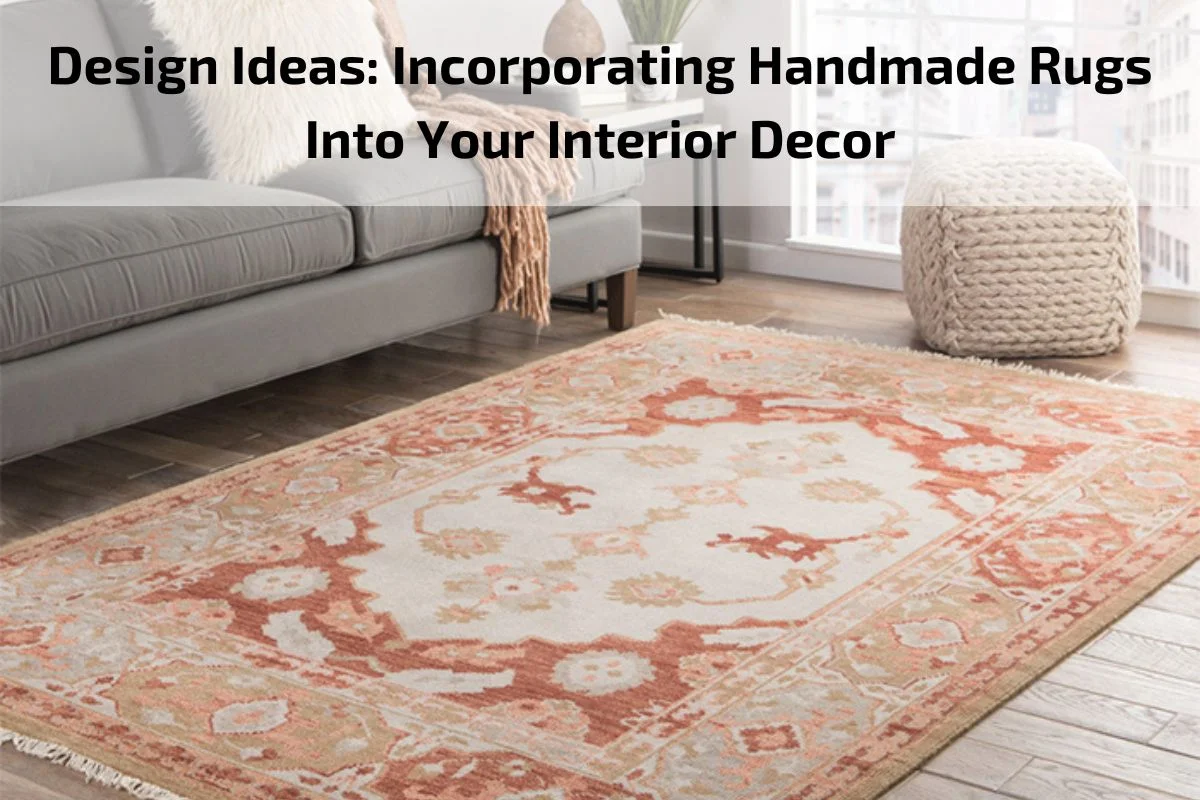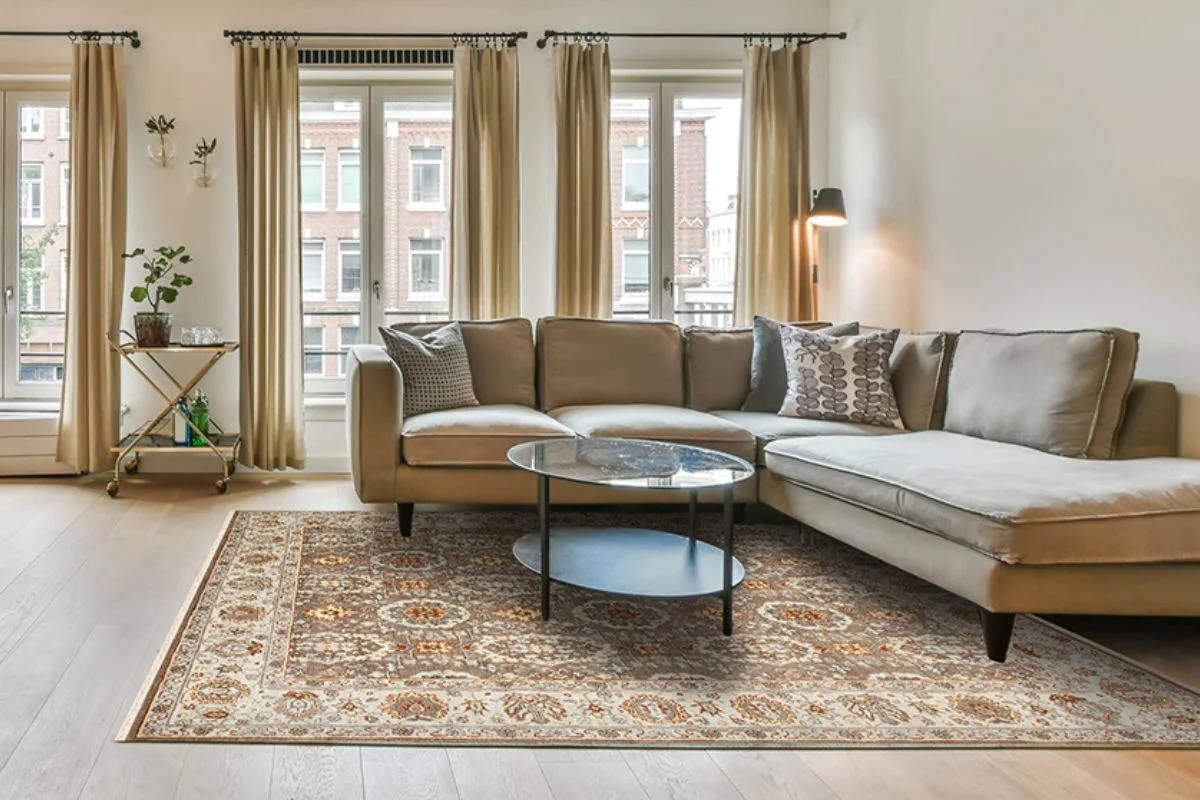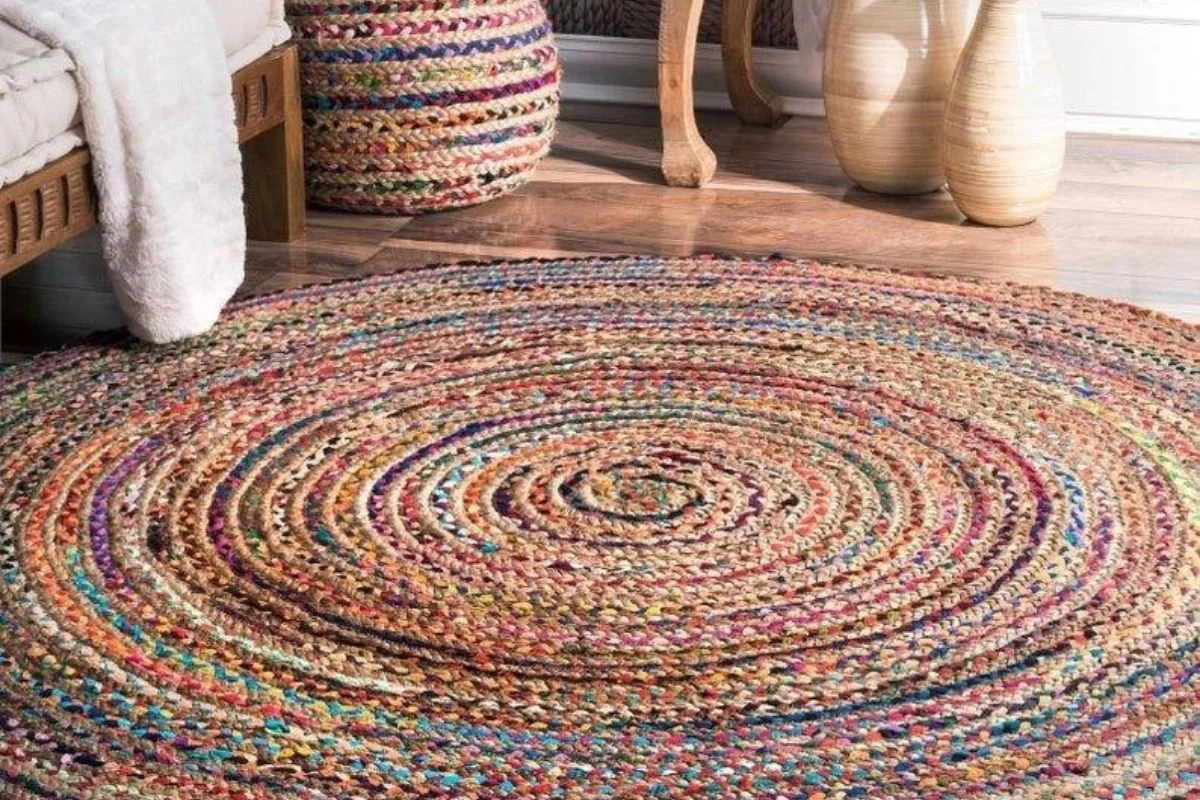
Handmade rugs are more than just floor coverings; they are works of art that add character, warmth, and personality to any interior space. With their unique designs, intricate patterns, and rich textures, handmade rugs have the power to transform a room and elevate its aesthetic appeal.
In this article, we will explore various design ideas for incorporating handmade rugs into your interior decor. Whether you’re looking to create a cozy reading nook in the living room, add a pop of color to a neutral space, or define separate areas in an open-concept layout, handmade rugs offer endless possibilities for enhancing your home’s style and ambiance.
Join us as we delve into the world of handmade rugs and discover creative ways to integrate them seamlessly into your interior decor. From layering rugs for added visual interest to using them as focal points in a room, there are numerous ways to showcase the beauty and craftsmanship of handmade rugs while infusing your home with charm and personality.
Brief overview of the Handmade Rugs
Handmade rugs are artisanal creations woven by skilled craftsmen using traditional techniques passed down through generations. These rugs are crafted meticulously by hand, imbuing each piece with a unique character and story. Renowned for their intricate designs, rich colors, and fine craftsmanship, handmade rugs serve not only as functional floor coverings but also as cherished works of art that can elevate the ambiance of any space. With roots in various cultures around the world, handmade rugs carry a sense of heritage and tradition, making them timeless treasures sought after by collectors and interior enthusiasts alike.
Importance of handmade rugs in interior design
Handmade rugs hold a paramount importance in interior design, serving as focal points that tie together the aesthetic and ambiance of a space. Here are several reasons why handmade rugs are indispensable elements of interior design:
Enhanced Aesthetics: Handmade rugs add depth, texture, and visual interest to a room, elevating its overall aesthetic appeal. The intricate patterns, vibrant colors, and luxurious materials of handmade rugs can serve as inspiration for the entire design scheme of a space.
Defined Spaces: Handmade rugs help delineate different areas within a room, providing a sense of organization and structure. Whether used to define a seating area in a living room or anchor a dining space, rugs create visual boundaries that contribute to the coherence of the design.
Warmth and Comfort: In addition to their visual appeal, handmade rugs also offer practical benefits by providing warmth and comfort underfoot. They soften hard flooring surfaces, making rooms feel more inviting and cozy, especially in colder climates.
Acoustic Control: Handmade rugs help absorb sound, reducing echoes and minimizing noise levels within a room. This acoustic control is particularly beneficial in large, open-concept spaces or rooms with hard surfaces that tend to amplify sound.
Versatility: Handmade rugs come in a wide range of sizes, shapes, and designs, making them versatile design elements that can complement any decorating style. Whether your aesthetic leans towards traditional, modern, or eclectic, there’s a handmade rug to suit your preferences.
Cultural and Historical Significance: Many handmade rugs carry cultural and historical significance, reflecting the traditions, beliefs, and craftsmanship of the communities where they originate. Incorporating these rugs into interior design not only adds depth and character but also pays homage to their rich heritage.
Investment Value: High-quality handmade rugs are often considered valuable investments that appreciate in value over time. Their craftsmanship, durability, and timeless appeal make them prized possessions that can be passed down through generations, adding a sense of legacy to a home’s decor.
Different Types and Styles of Handmade Rugs
Handmade rugs come in a diverse array of types and styles, each with its own unique characteristics, origins, and design elements. Here are some of the most prominent types and styles of handmade rugs:
Persian Rugs: Originating from Iran (formerly Persia), Persian rugs are renowned for their intricate designs, intricate patterns, and rich color palettes. These rugs often feature motifs such as floral patterns, medallions, and geometric shapes, and are typically hand-knotted using high-quality wool or silk.
Oriental Rugs: Oriental rugs encompass a broad category of handmade rugs originating from countries such as Turkey, India, China, and Afghanistan. These rugs are characterized by their elaborate designs, bold colors, and meticulous craftsmanship. Oriental rugs may feature traditional motifs like arabesques, paisleys, and animal figures.
Kilim Rugs: Kilim rugs, also known as flatweaves, are handwoven textiles originating from various regions, including Turkey, Iran, and Central Asia. Unlike knotted rugs, Kilims are created by tightly weaving colorful threads on a loom to produce intricate geometric patterns and bold color combinations. They are lightweight and reversible, making them versatile for use as both floor coverings and wall hangings.
Moroccan Rugs: Moroccan rugs hail from the North African country of Morocco and are prized for their plush textures, tribal-inspired designs, and earthy color palettes. These rugs often feature geometric patterns, diamond motifs, and symbols of protection or fertility. They are typically handwoven by Berber tribeswomen using techniques passed down through generations.
Tribal Rugs: Tribal rugs encompass a wide range of handmade rugs produced by nomadic or semi-nomadic tribes around the world. These rugs often feature bold, geometric designs and vibrant color schemes, reflecting the cultural heritage and artistic traditions of the communities that create them. Tribal rugs may include Persian tribal rugs, Afghan tribal rugs, and Anatolian tribal rugs, among others.
Contemporary Rugs: Contemporary handmade rugs blend traditional craftsmanship with modern design aesthetics, resulting in innovative and eclectic pieces that suit contemporary interiors. These rugs may feature abstract patterns, minimalist designs, or bold color contrasts, catering to diverse tastes and preferences in modern decor.
Antique Rugs: Antique handmade rugs refer to rugs that are at least 100 years old and are prized for their historical significance, rarity, and craftsmanship. These rugs may include antique Persian rugs, antique Turkish rugs, and antique Caucasian rugs, among others. Antique rugs often exhibit signs of wear and patina, adding to their charm and character.
Importance of proper maintenance and care routines
Proper maintenance and care routines are crucial for preserving the beauty, longevity, and value of handmade rugs. Here’s why maintaining a regular care regimen is essential:
Preservation of Appearance: Regular cleaning and maintenance help prevent dirt, dust, and debris from accumulating on the surface of the rug, maintaining its vibrant colors, patterns, and overall appearance. By removing surface contaminants promptly, you can prevent them from embedding into the fibers and causing permanent damage.
Prevention of Wear and Tear: Foot traffic, furniture placement, and everyday use can contribute to wear and tear on handmade rugs. Implementing proper maintenance routines, such as rotating the rug periodically and using rug pads to cushion and protect it from furniture weight, can help distribute the impact evenly and minimize excessive wear on specific areas.
Protection Against Moths and Pests: Handmade rugs are susceptible to damage from moth larvae and carpet beetles, which feed on natural fibers like wool and silk. Regular vacuuming, proper storage, and periodic professional cleaning can help deter these pests and prevent infestations that could result in irreparable damage to the rug.
Prevention of Mold and Mildew: Moisture accumulation, spills, and improper drying can create conditions conducive to mold and mildew growth, especially in humid environments. Promptly addressing spills, ensuring adequate ventilation, and avoiding prolonged exposure to moisture can help prevent mold and mildew from developing and causing structural damage to the rug.
Maintenance of Hygiene: Handmade rugs can harbor allergens, bacteria, and other contaminants that may pose health risks, particularly for individuals with respiratory conditions or allergies. Regular vacuuming, professional cleaning, and spot treatment of stains can help maintain a clean and hygienic environment, promoting indoor air quality and overall well-being.
Prevention of Color Fading: Exposure to sunlight and harsh cleaning agents can accelerate color fading and deterioration of natural fibers in handmade rugs. Implementing proper storage, using UV-protective window treatments, and employing gentle cleaning methods can help preserve the rug’s colors and prevent premature aging.
Protection of Investment Value: Handmade rugs are often valuable investments that appreciate in value over time. By implementing proper maintenance and care routines, you can protect the rug’s integrity and ensure that it retains its beauty and value for generations to come, enhancing its long-term investment potential.
Integrating Handmade Rugs into Your Home Decor
Handmade rugs serve as versatile design elements that can enhance the ambiance and aesthetic of any room. Here are some creative ways to seamlessly integrate handmade rugs into your home decor:
Define Spaces: Use handmade rugs to delineate different areas within a room, such as a seating area in the living room or a dining space in the kitchen. Placing a rug under furniture groupings helps anchor the space and creates visual boundaries, adding structure and cohesion to the room’s layout.
Add Texture and Depth: Incorporate handmade rugs to introduce texture and depth to your decor scheme. Opt for rugs with plush pile or intricate weaves to create contrast against smooth surfaces like hardwood floors or tiled areas. The tactile quality of handmade rugs adds visual interest and tactile warmth to the room.
Inject Color and Pattern: Choose handmade rugs with vibrant colors and bold patterns to infuse personality and character into your decor. Whether you prefer traditional motifs, modern geometrics, or eclectic designs, rugs offer an opportunity to experiment with color and pattern without committing to permanent changes.
Layering: Experiment with layering rugs to create visual interest and dimension in your decor. Layer a smaller rug on top of a larger one to add depth and create a focal point in the room. Mix and match different textures, sizes, and patterns to achieve a curated, eclectic look that reflects your personal style.
Contrast and Balance: Use handmade rugs to introduce contrast and balance into your decor scheme. Pair a vibrant, patterned rug with neutral furniture to create a focal point and balance the visual impact. Alternatively, choose a rug that complements existing colors and patterns in the room to create a cohesive look.
Transition Between Spaces: Use handmade rugs to create smooth transitions between adjoining spaces in an open-concept layout. Choose rugs with complementary colors or designs to visually connect different areas while maintaining distinct identities for each space.
Accessorize with Rugs: Treat handmade rugs as decorative accessories that can tie together the elements of your decor. Consider hanging a rug as a wall tapestry or using smaller rugs as table runners or wall hangings to add texture and visual interest to your decor scheme.
Personalize Your Space: Select handmade rugs that reflect your personal style and interests to infuse your decor with a sense of individuality. Whether you prefer vintage rugs with a patina of age or contemporary designs with a modern twist, choose rugs that resonate with you and speak to your unique aesthetic sensibilities.
Conclusion
Handmade rugs are more than just functional floor coverings; they are timeless pieces of art that can transform the ambiance of any space. Throughout history, these exquisite creations have been cherished for their beauty, craftsmanship, and cultural significance. From Persian rugs woven with intricate designs to Moroccan rugs adorned with tribal motifs, handmade rugs offer a glimpse into the rich tapestry of global traditions and artistic expression.


